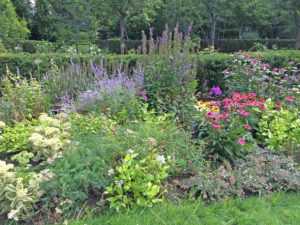
Cleveland perennial garden: Perovskia, Sedum ‘Autumn Charm’, Lobelia gerardii var.Vedrariensis, Echinacea, Sedum sieboldii, Phlox ‘Blue Paradise’, Chelone ‘Hot Lips’, Talinum ‘Limon’
Although it’s now December and most of us are no longer in the garden, it’s not too soon to start thinking about the changes we want to make when spring arrives. As I have less time to spend in the garden, I find myself pondering ways to lessen maintenance but still have lots of color and interest.
Perennials are the backbone of a flower garden and the icing on the cake of a landscape but I find that they are often underused because they are perceived as too much work. However, if we choose well, perennials can be maintained with minimal effort and time
I would suggest choosing perennials based on the following factors: long period of bloom, more than one season of interest, little need for deadheading, and strong stems that do not need to be staked.
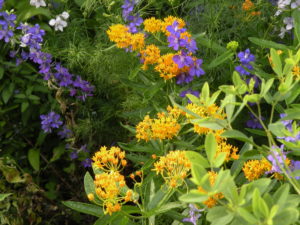
Asclepias tuberosa ‘Hello Yellow’ with Larkspur in my garden
Although Asclepias tuberosa is usually orange, there is a yellow cultivar called ‘Hello Yellow”, shown here with larkspur.
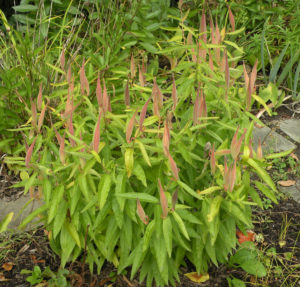
As the pods age, they turn from green to a pinky beige
For example, Asclepias tuberosa, a full sun perennial, is in bloom for six to eight weeks (July and August), even longer if the flowers are deadheaded, thus stimulating another bloom cycle. If you are designing a native plant or butterfly garden, this perennial should head the list since the nectar and pollen-laden flowers are particularly attractive to hummingbirds, Monarch butterflies, bees, and other beneficial insects. The flowers are followed by long pods that offer a second season of interest. I would suggest cutting off the pods before they open to prevent seeding unless you are planning to use the open pods with their silky seeds in dried flower arrangements. ( Second caption should read: As the pods age, they turn from green to a pinky beige.)
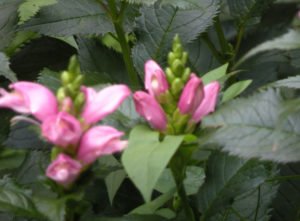
Chelone ‘Hot Lips’ in late August in my garden
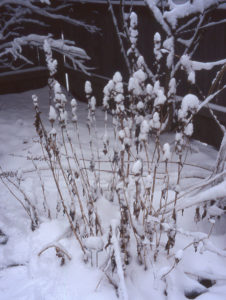
The deadheads of Chelone ‘Hot Lips’ become sculptural when covered with snow.
Another example is Chelone ‘Hot Lips’, a full sun to partial shade perennial that starts blooming in August and continues through the end of September. I only cut back the stalks in the spring if they haven’t fallen to the ground because the snow-covered deadheads are an integral part of the winter garden.
More about high performance/low maintenance perennials next time.


0 Comments